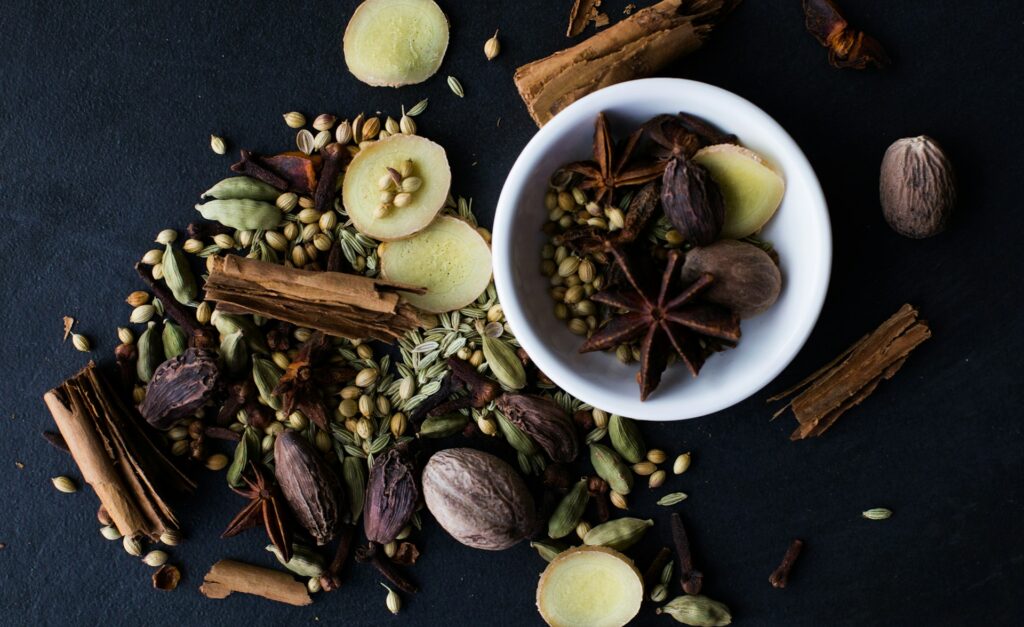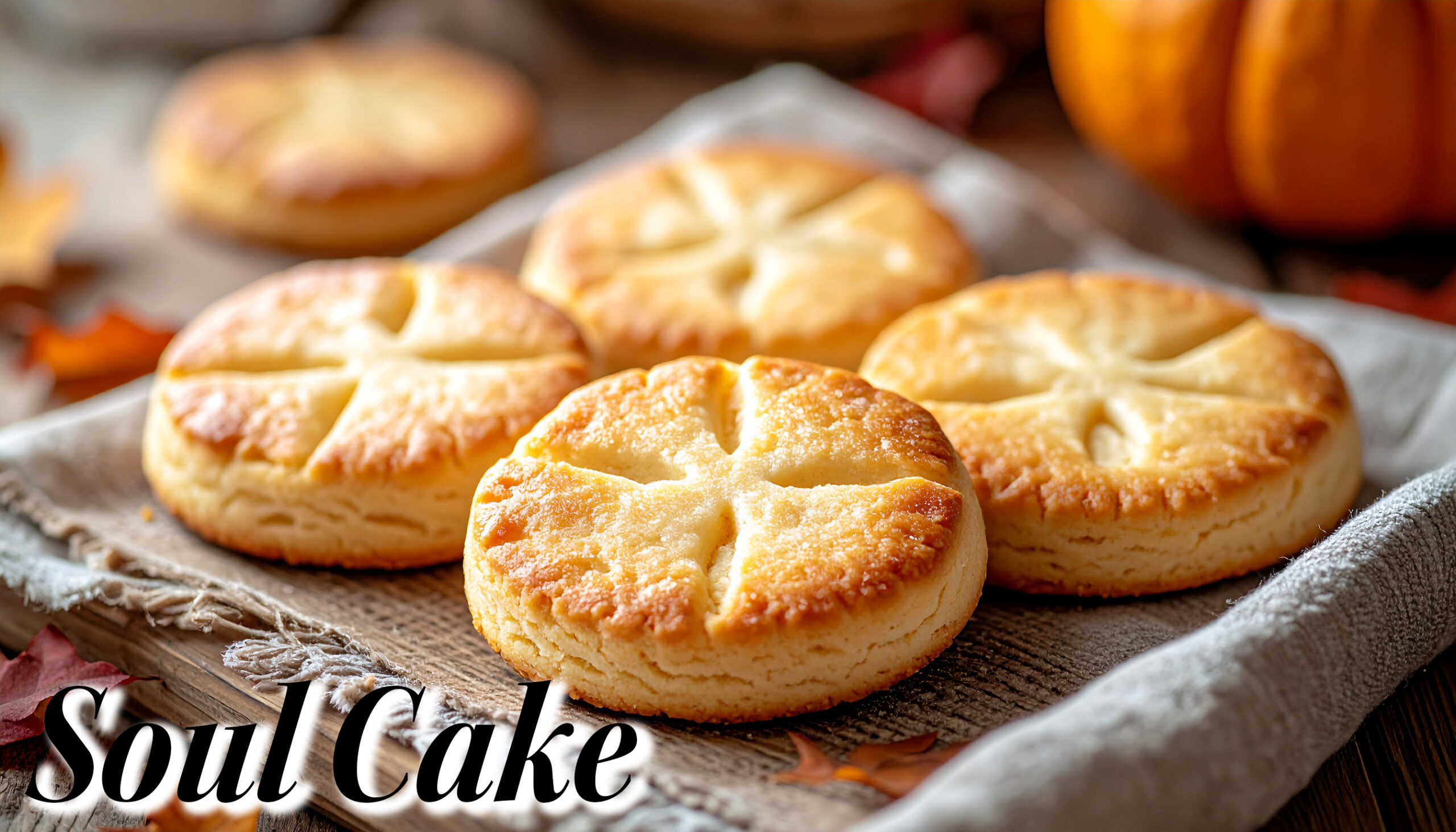Do you know what soul cakes are?
Soul cake is one of the traditional baked goods eaten in Europe.
That's quite an unfamiliar name, isn't it?
Soul means “spirit.”
There's a deep reason why this word fits here, and I think its origin and flavor make it a very gentle dessert.
This time, let's dive deeper into soul cakes!
What is a soul cake?

Soul Cake is a traditional European small baked confection.
It is especially customary to eat it around Halloween, All Saints' Day, and_ All Souls' Day.
It resembles scones or shortbread in appearance and has a simple, mild sweetness.
The texture is light and crispy on the outside, moist and tender on the inside, with a subtle, warm aroma from the spices.
Sugar is used in moderation, resulting in a simple, unassuming flavor that isn't overly sweet like modern cookies.
Furthermore, it uses a generous amount of butter, and when you take a bite, it crumbles deliciously in your mouth while delivering a rich, deep flavor.
Traditionally, a cross-shaped cut is made on top, signifying the Christian cross.
The History of Soul Cake
Halloween and Soul Cakes

Soul cakes originally held religious significance, being made to pray for the souls of the deceased.
It is considered one of the origins of the custom of “trick-or-treating,” which is connected to modern Halloween.
This custom spread around the time of All Saints' Day and All Souls' Day, established by Christianity.
In medieval England, it was customary for people to pray and give alms in the hope of saving the souls of the deceased who were in purgatory.
Soul cakes were considered to embody those prayers, baked as offerings for the departed or distributed to the poor.
Eventually, this custom evolved into a ritualistic act known as “Souling.”
On All Saints' Day and the night before, people—especially children and the poor—went from house to house, reciting “We pray for the souls of the departed” while asking for soul cakes.
This act of receiving sweets instead of prayers is considered the origin of the later “trick-or-treat” custom.
And a cross-shaped cut is made on the surface of the soul cake.
This is not merely decoration; it holds meaning as a Christian symbol.
The Journey of Soul Cake

By the 16th-century Reformation period, the religious significance of soul cakes gradually diminished under the influence of Protestantism, which rejected the concept of purgatory.
Nevertheless, the practice persisted as a local custom for a long time, and there are records indicating that soulings were still being performed into the first half of the 20th century.
Today, soul cakes are once again gaining attention as confections symbolizing historical customs.
At British heritage sites, events were held where medieval-style soul cakes were distributed.
These events have sparked a revival of ancient prayer traditions during the Halloween season.
Soul cakes are not merely baked goods; they can be considered cultural heritage born from prayers for the departed.
Fun Facts and Interesting Stories About Soul Cakes
The shape symbolizes the “sun.”
Soul cakes are often made round, and it is traditional to make a cross-shaped cut on top.
This shape served as a Christian symbol while also embodying the wish for the “rebirth of the souls of the dead,” modeled after the sun.
Spices warm the soul.

The use of spices like cinnamon, nutmeg, and allspice is said to have had a symbolic meaning beyond warming the body during cold seasons: to “comfort the souls of the departed.”
The Beatles sang about
Actually, The Beatles arranged a traditional song called “A Souling Song” in 1963 and performed it as “Soul Cake (Soalin')”.
This song, known as an old folk song, centers on the custom of distributing soul cakes and serves as a valuable musical document conveying the cultural background of Halloween and All Souls' Day.
It has been revived as a Halloween candy in modern times.
Although it became almost unseen in the late 19th century, in recent years it has increasingly been recreated as a traditional confection associated with Halloween and All Souls' Day.
Often baked at home, these old-fashioned “soul cookies” are enjoying a resurgence in popularity.
How to Make Soul Cakes
Ingredients (for about 12 pieces)
- Unsalted butter … 100g
- Sugar (granulated sugar or caster sugar) … 80g
- Egg yolks … 2
- Cake flour … 200g
- Baking powder … 1/2 teaspoon
- Ground nutmeg … 1/2 teaspoon
- Ground cinnamon … 1/2 teaspoon
- Allspice … 1/4 teaspoon (if available)
- Milk … 1 to 2 tablespoons (adjust based on dough consistency)
- Raisins or currants (for garnish) … as needed
How to make them
- Preparation
Preheat the oven to 180°C. Line a baking sheet with parchment paper. - Cream the butter and sugar together.
Place the butter at room temperature in a bowl, add the sugar, and beat well with a whisk until pale. - Add the egg yolk
Add the egg yolk and mix thoroughly until the mixture is smooth. - Add the dry ingredients
Sift in the cake flour, baking powder, and spices, then mix lightly with a wooden spoon. - Gather the fabric
Gradually add milk until the dough comes together. Knead lightly by hand to form a manageable dough. - Molding
Roll out the dough to a thickness of about 5mm and cut out circles using a round cutter. Lightly score a cross on the surface and place a raisin in the center. - Bake
Bake in a 180°C oven for about 12 to 15 minutes, until the surface is lightly browned. - Cool
Once baked, let it cool on a wire rack and enjoy while still slightly warm.
Points and Arrangements
- The cross-shaped cutouts are a traditional ornament long regarded as a symbol of the soul.
- Instead of using raisins, adding dried cranberries or orange peel will also give it a rich aroma.
- It pairs well with black tea or hot milk, and its flavor develops better after sitting for a day than when freshly baked.
Summary
How was it?
This time, we introduced Europe's traditional soul cakes!
This baked treat holds deep meaning, and I'm glad it's becoming popular again in modern times.
Regarding where you can eat this soul cake in Japan, I was unable to confirm.
It seems that restaurants offering this item on their menus are quite rare, and it's possible that it might be sold under a different name or in a different form.
You might also be able to enjoy it at events like Halloween or during cultural exchanges, particularly those centered around Europe.
Either way, it doesn't seem like it'll be straightforward.
This article includes recipes, but it seems like it might be a bit challenging, doesn't it?
I once tried making cookies, and even as an amateur, I remember it being quite difficult.
If you're still up for it, or if you love cooking, give it a try sometime!
Thank you for watching until the very end!
This site features recipes perfect for autumn and Halloween, including this pumpkin pie.
If you'd like, please check out our other articles too!




Comment